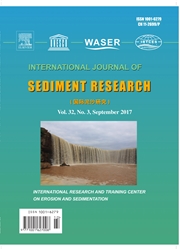

 中文摘要:
中文摘要:
造林由于为森林产品,并且为它象土壤侵蚀控制和沉积减小那样的生态的好处增加需求全球被鼓励了。然而,造林减少流量,潜在地因此在干旱区域加重水缺乏。以便可能的水收益减小在一个干旱区域由造林引起了的份量上估计,在西北中国的 Qilian 山的一个小分水岭(Pailugou 分水岭) 被选择为一个学习区域。到在学习区域的不同造林情形的水文学动力学的回答用 TOPOG 模型被模仿。结果证明那造林能在地点规模导致流量的完全的损失。在分水岭规模,森林范围的 10% 增加导致了 25.6 公里的流量减小,等价于在森林 un 的分水岭的 13% 流量。由于 climatological 和地形学的限制,然而,潜在的森林分发仅仅占据了 46.3% 分水岭区域,并且当森林盖子比率从 0.41% ~ 46.1% 增加了时,流量减小被估计到达 60% 的最大值。实际森林范围在学习区域是 36% ,因此,水收益将被减少与更进一步在森林区域增加。我们的学习建议在水产量上的森林范围增加和它的否定影响的众多的好处之间的一宗交易应该小心地与内在地严重的水缺乏在干旱区域被探讨。
 英文摘要:
英文摘要:
Forestation has been encouraged worldwide due to increasing demand for forest products, and for its ecological benefits such as soil erosion control and sediment reduction. However, forestation reduces runoff, thus potentially aggravating water shortages in arid regions. In order to quantitatively estimate the possible water yield reductions caused by forestation in an arid region, a small watershed (the Pailugou watershed) in the Qilian Mountains of northwest China was chosen as a study area. The responses of hydrological dynamics to different forestation scenarios in the study area were simulated using the TOPOG model. The results showed that forestation could lead to a complete loss of runoff at the site scale. At the watershed scale, a 10% increase in forest coverage led to a runoff reduction of 25.6 mm, equivalent to 13% of the runoffin the un-forested watershed. However, due to climatological and topographical constraints, the potential forest distribution occupied only 46.3% of the watershed area, and runoff reduction was estimated to reach a maximum of 60% when the forest cover ratio increased from 0.41% to 46.1%. Actual forest coverage is 36% in the study area, thus the water yield will be reduced with any further increase in forest area. Our study suggested that a trade-off between the numerous benefits of forest coverage increase and its negative impact on water yield should be carefully addressed in arid regions with inherently severe water-shortage.
 同期刊论文项目
同期刊论文项目
 同项目期刊论文
同项目期刊论文
 Water Yield Reduction after Afforestation and Related Processes in the Semiarid Liupan Mountains , N
Water Yield Reduction after Afforestation and Related Processes in the Semiarid Liupan Mountains , N Effect of rock fragments on the percolation and evaporation of forest soil in Liupan Mountains, Chin
Effect of rock fragments on the percolation and evaporation of forest soil in Liupan Mountains, Chin 期刊信息
期刊信息
